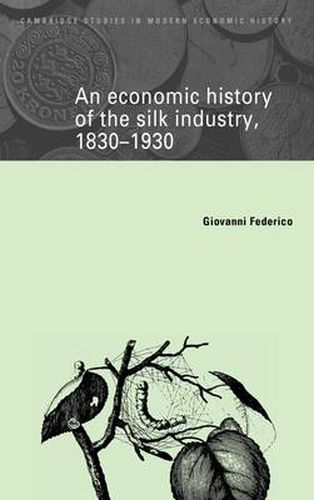Readings Newsletter
Become a Readings Member to make your shopping experience even easier.
Sign in or sign up for free!
You’re not far away from qualifying for FREE standard shipping within Australia
You’ve qualified for FREE standard shipping within Australia
The cart is loading…






An Economic History of the Silk Industry, 1830-1930 is an innovative historical analysis of the development of a major commodity, examining the growth of the world silk industry. Silk production grew as a result of Western industrialisation. Professor Federico documents the technical progress and the changing methods of production which enabled the silk industry to cope with increased demand. Significant changes in the geographical distribution of world output are also discussed. The author points out that Italy and China lost their markets to Japan and that silk became the first example of a Japanese success story on the world market. Italy retained a sizeable market share until it diverted labour to higher wage occupations due to its own industrialisation. This same fate was to befall Japan’s silk industry after the Second World War.
$9.00 standard shipping within Australia
FREE standard shipping within Australia for orders over $100.00
Express & International shipping calculated at checkout
An Economic History of the Silk Industry, 1830-1930 is an innovative historical analysis of the development of a major commodity, examining the growth of the world silk industry. Silk production grew as a result of Western industrialisation. Professor Federico documents the technical progress and the changing methods of production which enabled the silk industry to cope with increased demand. Significant changes in the geographical distribution of world output are also discussed. The author points out that Italy and China lost their markets to Japan and that silk became the first example of a Japanese success story on the world market. Italy retained a sizeable market share until it diverted labour to higher wage occupations due to its own industrialisation. This same fate was to befall Japan’s silk industry after the Second World War.